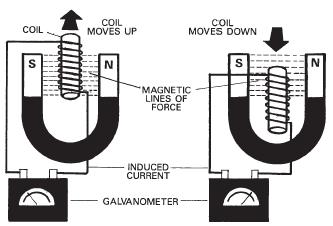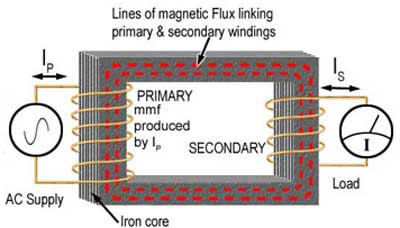Register now or log in to join your professional community.

dc has no alternating waves so there is no induced emf in the secondary. so dc is applied to primary there is no impedance in the primary due to dc.hence only resistance which is very less in the tfrmr windings.due to that primary will burn out.

Transformer will burn out if applied DC is large enough to pass high current in primary windings then destruct transformer primary winding isolation


frequency in dc supply is zero, thatsy inductive reactance =0. so fuse will blow due to overheat when dc supply given to transformer

Transformer windings shows high inductive impedence to AC supply so limiting the current as per its rating. But for DC supply Inductive impedence is very small so high DC currents may flow; Hence burning the said winding of Transformer.

DC Supply in either side of Transformer Winding cannot induce Voltage to other Side winding, So no Output shall be present.
Transformer windings shows high inductive impedence to AC supply so limiting the current as per its rating. But for DC supply Inductive impedence is very small so high DC currents may flow; Hence burning the said winding of Transformer.

Alternating current the name itself indicating that it has alternating quantity, i.e the current or voltage passes through positive and negative half cycle. So that the current is always starts from zero reaches to maximum peak level and again gets decreased to zero in positve half cycle and the same takes place in negative half cycle. this indicates that the current produces the magnetic flux which is also an alternating quantity.
we have already know about electromagnetic induction, i.e when ever a conductor cuts the magnetic flux an emf is induced in the coil.
Electromagnetic induction:

whenever ac flows throughs the primary coil, alternating flux flow through the core and cuts the secondary winding of the transformer which results in produing emf at the secondary winding.
But the dc(direct current) which is an unidirectional quantity produces constant flux, it doesn't produces the alternating flux and it wont cuts the secondary winding. The dc circuit will have only resistance and no impedance. We knowthat the magnitude of DC current is1.5 greater than the AC current. due to this the winding of the transformer gets heated and will burned.



Tranformer needs AC for operation not Dc .As because of AC emf is induced in the secondary while DC has no frequency no change in phase of current occurs hence no output at secondary because there is no physical path between Primary and Secondary windings of the Transformer.
BUT
To run trasformer on DC , we have to use an inverter which makes this DC to AC and then to the primary of the transformer.
D. C power is not transmitted between the coils of transformer . there would be no current on the other side of transformer, unless the power of the source was constantly modulated. becouse flux does not change its state. after some time .excessive heat is produced and winding may be burn.
A transofrmer's primary winding presents two form of oppossition to current flow . the first is resistance which is dependent on length,x section of area and resistivity of wound conductor. the second reactance, which depends upon the inductance of the winding and frequecy of the supply. Resistance opposition both AC and DC currents, While Reactance opposes only AC currents. In the case of transformer's winding, the ristance is realitavily low while the reactance is high , SO however, the resistance is to low that a large currents would flow .This current likely overheat the winding isulation, resulting in its breakdown, Causing a short circuited which could severaly damage the transformer.

transformer working with the principle of muchual induction. dc have not produce muchal induction



